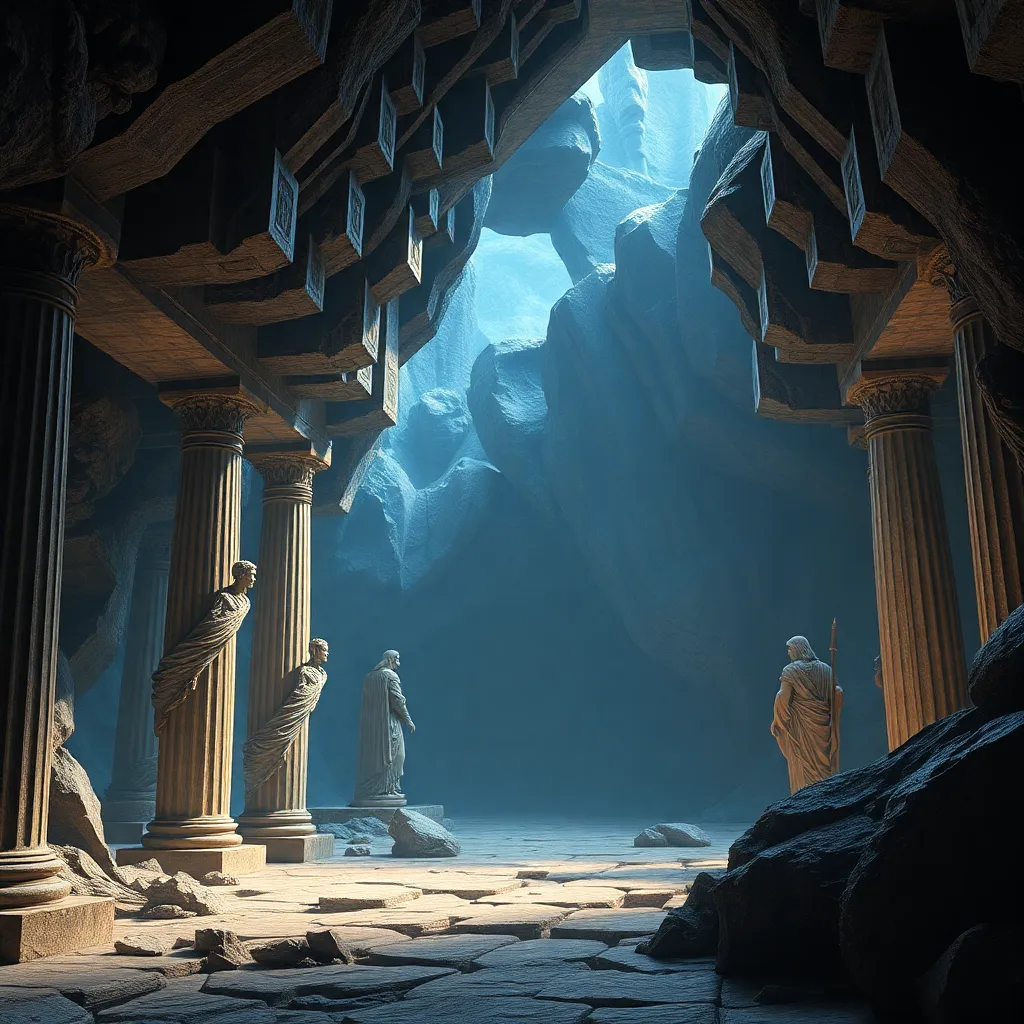The Underworld and Its Role in the Development of Greek Mythological Characters
I. Introduction
The Underworld in Greek mythology is a complex realm that serves as the final resting place for souls after death. It is often depicted as a shadowy, mysterious place where the departed experience a range of fates depending on their actions in life. The significance of the Underworld extends beyond mere geography; it reflects ancient Greek beliefs about mortality, justice, and the afterlife.
This article will explore how the Underworld influences the development of various characters in Greek mythology, examining how their journeys into this dark realm lead to profound transformations, moral dilemmas, and emotional connections.
II. The Structure of the Underworld
The Underworld is traditionally divided into several realms, each with distinct characteristics:
- Hades: The main domain of the dead, ruled by the god Hades.
- Elysium: A peaceful and blissful place for heroes and the virtuous, often depicted as a paradise.
- Tartarus: A deep abyss used as a dungeon of torment for the wicked and as a prison for the Titans.
Key figures associated with the Underworld include:
- Hades: The god of the Underworld, often misunderstood as a deity of evil.
- Persephone: The queen of the Underworld, who embodies the duality of life and death.
- Charon: The ferryman who transports souls across the river Styx.
The symbolism of the Underworld is multifaceted, representing not only death but also rebirth, transformation, and the cyclical nature of life.
III. The Underworld as a Catalyst for Character Change
Many Greek heroes undergo significant transformations after visiting the Underworld. For example:
- Orpheus: His journey to retrieve Eurydice teaches him about the limits of love and the inevitability of loss.
- Heracles: His descent into the Underworld as part of his labors highlights his bravery and the trials he must face to achieve redemption.
The trials faced in the Underworld often serve as a crucible for characters, forcing them to confront their fears, regrets, and the consequences of their actions. These experiences profoundly impact their heroic journeys, often leading to a deeper understanding of their own mortality and purpose.
IV. Thematic Exploration of Mortality and Fate
The Underworld represents a stark reminder of human mortality. Characters’ fates are intricately linked to their experiences in this dark realm:
- The inevitability of death shapes their motivations and actions.
- Encounters with the deceased often challenge living characters to reflect on their own lives.
The Underworld also raises moral and ethical dilemmas, forcing characters to grapple with questions of justice, retribution, and the consequences of their choices. This exploration allows for a rich tapestry of themes that resonate with the human experience.
V. The Role of the Underworld in Character Relationships
The interactions between the living and the dead in the Underworld provide a unique lens through which to examine relationships:
- Odysseus and the Shades: His encounters with the spirits of the fallen reveal insights into his own life and choices.
- Orpheus and Eurydice: Their love story illustrates the profound connection between love and loss, and the lengths one will go to for love.
- Persephone and Demeter: Their relationship highlights themes of familial bonds, separation, and the cycle of life and death.
These relationships underscore the emotional weight of the Underworld, emphasizing how it shapes the characters’ identities and interactions.
VI. Cultural Reflections and Influences on Character Development
The Underworld significantly influenced ancient Greek beliefs about life and death. It served as a cultural framework for understanding morality and the afterlife:
- It provided a narrative space for exploring complex human emotions, such as grief, loss, and redemption.
- Comparisons can be drawn with other mythological underworlds, such as the Egyptian Duat or the Norse Hel, each reflecting unique cultural attitudes towards death.
The Underworld acts as a narrative device that allows for the exploration of fundamental human questions, making it a powerful element in character development.
VII. Modern Interpretations of the Underworld and Its Characters
Greek underworld myths continue to influence contemporary literature and media. Their themes resonate with modern audiences, leading to reimaginings of characters and stories:
- Authors and filmmakers often draw on the myth of Orpheus to explore themes of love and sacrifice.
- Modern adaptations of the Underworld present new interpretations of ancient figures, often emphasizing their psychological complexity.
- The Underworld remains relevant as a metaphor for personal struggles and the human condition.
These modern interpretations highlight the enduring impact of Greek mythology on our understanding of character complexity.
VIII. Conclusion
The Underworld plays a vital role in the development of Greek mythological characters, serving as a catalyst for transformation, a reflection of mortality, and a crucible for relationships. Its influence extends beyond ancient culture, shaping modern interpretations of these timeless narratives.
In examining the Underworld’s significance, we gain insight into the intricate web of human emotions and experiences that define both ancient and contemporary storytelling. Greek mythology, with its rich tapestry of characters and themes, continues to resonate and inspire across generations.




